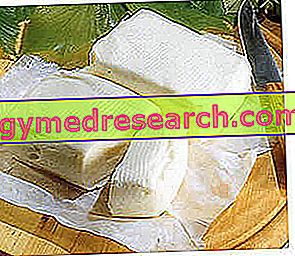The capsules are single-dose pharmaceutical preparations, intended for oral administration. Consisting of a shell of hard or soft consistency, of various shapes and capacities, the capsules contain granules, powders or oily mixtures; if the content of the capsule is liquid, it is more commonly called pearls.

The content of the capsule can be constituted only by the active substances alone, or more commonly by the set of active ingredients, adjuvants and excipients. Among the latter we mention solvents, thinners, lubricants and disintegrants.
The capsules are mainly used in place of other less tolerated pharmaceutical forms, such as herbal teas or syrups, in the case in which the drugs or supplements have bitter or unwanted flavors; moreover, capsules are often necessary due to the technical impossibility of forming tablets.
The capsule shell is generally constituted by alimentary gelatin, or other substance, the consistency of which can be adjusted by adding a plasticizing agent (glycerin, sorbitol, simple syrup, starch); often preservatives are also added (for example small amounts of sulfur dioxide to prevent the growth of mold and bacteria on the gelatin). If necessary, the capsule shell can contain flavorings, but also natural and matting dyes. The choice of capsule colors is not causal, but is often based on marketing (many supplements) or therapeutic elements:
SEDATIVES: dark blue-brown;
STIMULANTS: orange - yellow;
RELAXATION: olive / light brown (olive acts on the vegetative system by relaxing and stimulating);
SEDATIVE OF THE COUGH: light brown / blue (brown causes a block of excitement and repels stimulating influences, light blue is relaxing);
DISINFECTANTS: turquoise / light blue (turquoise is perceived as a cold color and the cold freezes growth and makes it sterile; light blue is a symbol of lightness, purity).
| Advantages of the capsules |
1) mask unpleasant odors and flavors; 2) they dissolve easily in the stomach, releasing the active ingredients in less than 15 minutes; 3) capsule production machinery is relatively inexpensive and easy to maneuver; 4) the choice of excipients is quite simple and does not pose the typical difficulties of the tablets; 5) the psychological effect given by the colors of the capsules contributes to the therapeutic success of the medicine. |
The casings consist of two preformed cylindrical portions (body and lid), which are closed by self-sealing the capsule; for both, one end is closed, while the other is open. At the manufacturer, the capsules are supplied with the body inserted into the lid by light pressure, so as to easily separate the two parts. The production technique involves four phases:
1. Orientation of the empty capsules
2. Opening the capsules
3. Body filling, alignment of the two parts of the capsule and "snap" closure
4. Expulsion
All this takes place in special machines that allow filling up to 150, 000 cps / h.
The casings can have an animal origin, if gelatine is used, obtained by partial hydrolysis, acid or alkaline, of COLLAGEN, or vegetable; in the latter case, hydroxypropyl cellulose is used. Before the use, for the manufacture of capsules, the gelatin is obviously analyzed as a material at risk BSE ("mad cow").
Instead of the classic gelatin, the capsule shell can be replaced by starch; in this case we speak of amylaceous capsules, cachets or cialdini . The wrap of the cialdino is made of unleavened bread, usually of wheat flour, and consists of two flattened and preformed cylindrical sections. To ingest a cachet it is necessary to moisten it completely, making it as soft and mellow as possible.
After taking, the gelatin capsules dissolve rapidly in the acidic environment of the stomach. The so-called gastroresistant capsules, such as keratinizing ones, are used to directly convey those substances that cannot be inactivated by gastric or gastric acidity into the intestine.
In fact, keratin is not attacked by gastric juices and releases the active ingredient directly into the intestinal fluid (kilo).
| Disadvantages of the capsules |
1) it is not possible to divide into several parts; 2) the appearance is sometimes not very natural, similar to plastic. |
As seen in the article, as a general rule it is important to avoid crushing the capsules or opening them, unless this is explicitly reported on the illustrative leaflet (on the risk of ineffectiveness of the drug). In the modified-release capsules, on the other hand, the filling or wrapper contains special excipients, or are prepared with a particular process which modifies the speed or the site in which the active principle is released.



